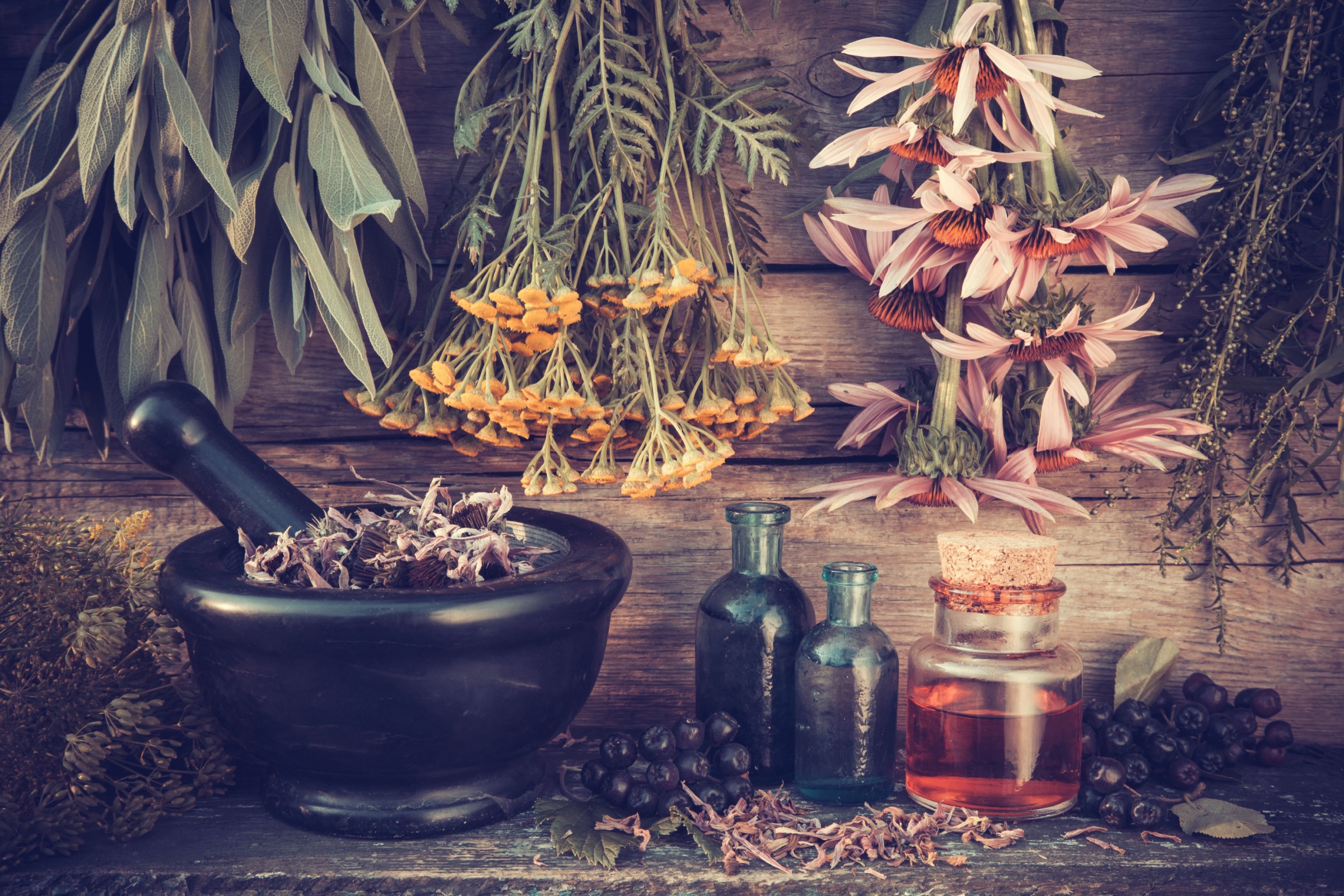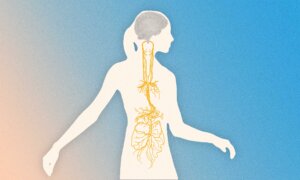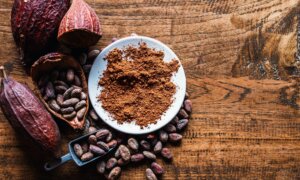Peak season for runny noses, itchy eyes, and sneezing is well underway in many parts of the United States. The forecast of the National Allergy Map changes almost daily during these early months of the year. Currently, about one-fourth of the country is on medium alert for pollen. As temperatures warm up, plants awaken and spread their fine dusty substance to procreate.
Many of us see the yearly pollen flight more as nature’s spring attack on humans than a love story of reproduction.
According to the Asthma & Allergy Foundation of America, approximately 81 million people have been diagnosed with hay fever in recent years. Those affected by the fine powder released by trees, flowers, grasses, or weeds often struggle for months from congestion, post nasal drip, facial swelling, and itchiness, to overall discomfort and severe asthmatic conditions. Sometimes, the condition can last weeks to months—for some, even into fall.
Side-Effects Accompany Over-the-Counter Allergy Medication
Patients search desperately for solutions to ease their various symptoms and frequently reach for over-the-counter (OTC) medications such as Benadryl or fluticasone (flonase). Doctors habitually prescribe antihistamines, decongestants, or inhaled corticosteroids to alleviate their patients’ torment and may overlook potential side effects and mismanagement of such drugs.
Side effects can range from dizziness and drowsiness to constipation and upset stomach. Antihistamines often come with a warning not to drive or operate heavy machinery. Decongestants may affect the heart, raise blood pressure, or cause problems for individuals with glaucoma. Often highly effective steroids pose potential long-term side-effects.
Medications, such as albuterol, which widen the airway or relax the lung muscles to ease breathing during an asthma attack come with their own set of problems. “Over-reliance on short-acting bronchodilators for symptom relief hinders optimal asthma management, thus negatively affecting overall patient health and wellbeing,” a 2022 review published in Advanced Therapies states.
A lesser-known but much safer and equally effective way to treat pollen allergies and hay fever is through homeopathy.
Take the Safe Route–Allergy Relief Through Homeopathy
Lynn Wagner, a certified classic homeopath and member of the board of directors at the
National Center for Homeopathy (NCH), told The Epoch Times: “Given the many possible side effects of these OTC allergy relief products, homeopathy is an excellent alternative for pollen allergies.
“Homeopathy treats a person, not a disease state. The remedy stimulates the body to heal, it gives support to your own immune system. Remedies are nontoxic and highly diluted versus chemical dosing prescription drugs.”
The following common allergy symptoms can be addressed through homeopathy:
- Runny nose and nasal stuffiness (congestion)
- Watery, itchy, red eyes (allergic conjunctivitis)
- Sneezing
- Cough
- Itchy nose, roof of mouth, or throat
- Mucus that runs down the back of your throat (postnasal drip)
- Swollen, bruised-appearing skin under the eyes (allergic shiners)
However, employing homeopathy in any treatment plan asks for our allopathic-trained minds to shift. The thought process needs to change accordingly away from the common “a-pill-for-an-ill” model.
Become a Symptom Detective
The “totality of symptoms” is one principle of homeopathy. Therefore, it’s crucial to observe the patient closely before utilizing any homeopathic remedies.
“While conventional medicine prescribes a treatment based on a diagnosis, a homeopathic practitioner chooses a remedy that matches the unique symptom profile of the individual. For example, a person with allergies who is also chilly with a dry throat and itchy ears would receive a different remedy than someone with allergies and an upset stomach who is hot, sweaty, and craves water,” said Ms. Wagner, who established her practice in the Philadelphia area.
She wants people to understand that homeopathy is a holistic approach to health and well-being. This involves the entire body not just one organ or one system.
“Although a symptom of disease may only appear in one part of the body, the entire body will be affected by this imbalance. This holistic approach often results in two people with the same illness receiving two different homeopathic remedies,” Ms. Wagner emphasizes.
Still, as “there are no known side effects or contraindications for taking remedies alongside pharmaceutical medications,” Ms. Wagner is confident that even people with little to no training can utilize this alternative medicine for simple issues, such as minor first-aid—or pollen allergies.
Looking for Clues
Ask questions such as:
- What symptoms are there?
- When did those symptoms start? Did they change over time?
- Has the mood of the patient changed?
- Do environmental factors, for example, hot or cold weather, change the symptoms?
Finding the Correct Remedy and Dosage
Education and an increased awareness of homeopathy and its use are the mission of the NCH. For that reason, they created the following infographic to support people new to this alternative modality.

(Courtesy of National Center for Homeopathy)
Homeopathic Allergy Treatment
Choosing the right homeopathic remedy for seasonal allergies depends on the individual’s specific symptoms. Here is a guide to help find one that is right for you.
1. Sabadilla
Sabadilla is the remedy to use if no other one fits your allergy symptoms well. It is indicated for people with ample bland discharge of the nose, frequent sneezing, sensitivity to odors, frequent need to swallow, or experiencing the feeling of a
lump in the throat. Warm food and drinks improve the symptoms of this “chilly person,” whereas cold food/drinks make the patient feel worse. Sabadilla is “good for the asthmatic form of hay fever,” Ms. Wagner said.
2. Allium cepa (bulb onion)
Allium cepa, or bulb onion, creates watery eyes with bland tears and acrid nasal discharge, but it can also resolve these same symptoms. Patients who benefit from this remedy often suffer from red and irritated eyes with light sensitivity. Their throat might be burning from post-nasal drip of mucus.
“There can be violent sneezing with a hoarse voice and cough. The symptoms are better in open air, and often accompanied by sleepiness,” the homeopathic practitioner said, and people possibly feel a dull headache or experience “severe sneezing on entering a warm room or on deep breathing.” Symptoms usually get worse in the evening or in August.
3. Kali bichromium
If patients suffer from severe sinus pain, Kali bichromium is the remedy to choose. It is characterized by pain that is felt above the eyes, spreading to the sinuses. “Their nasal discharge is stringy, thick, gluey, and yellow with post-nasal drip. The symptoms are worse with cold and around 2–3 a.m. All symptoms are better from heat,” Ms. Wagner said. People may suffer from mouth ulcers, and the pain feels frequently worse when stooping down or going through barometric pressure changes.
4. Ambrosia
Ambrosia is another excellent homeopathic remedy indicated for patients with intolerably itchy eyelids and a profuse flow of tears (lachrymation). This is caused by an overly active lacrimal gland that generously secretes clear liquid, also through the nose (watery, drippy nose), which may irritate the throat. Patients who suffer from allergies indicated for this preparation often report that their nose and head feel as if they were about to explode. Ms. Wagner added: “Patients needing ambrosia may also have asthmatic breathing and diarrhea, which is worse in the summer.”
5. Euphrasia
Euphrasia is indicated to counter symptoms of burning, watery eyes accompanied by a bland to thick discharge out of the nose, and sometimes even the eye itself. Patients feel as if they need to rub or wipe their eyes constantly, which may also lead to swollen eyelids. Although nasal and throat symptoms sometimes do not feel as dominant, people might feel a “sensation of a foreign body (such as a grain of sand) in their eyes,” Ms. Wagner reported from her experience with allergy patients. “The symptoms are worse with sunlight, at night, and inside—while better in cool, open air.”
6. Arsenicum album
Frequent sneezing, watery discharge, and symptoms that get better when staying warm and cozy inside instead of venturing to the outdoors call for Arsenicum album. Patients might suffer from swollen and burning eyes with possible inflammation. Usually, the “right side is generally more affected than the left and the symptoms tend to be worse during the night, particularly on lying down,” Ms. Wagner said.
7. Natrum muriaticum
If your discharge has the texture of raw egg white, Natrum muriaticum is the remedy of choice. The surfacing mucus presents itself as white, clear, watery, and can be extremely profuse. Patients may suffer from an itchy nose, violent sneezing, or might lose their senses of smell or taste. Ms. Wagner said that “hay fever responding to this remedy can often be accompanied by violent, pulsating headaches made much worse by the heat of the sun, or by increased emotional sensitivity.”
8. Nux vomica
Nux vomica is indicated for people who often feel cold, overly sensitive, and experience an “acute sensitivity to the slightest odor or particle of pollen,” Ms. Wagner said. “There can be a very stuffed-up nose in alternating nostrils, intense itching of the ears, nose, and eyes, and an unsatisfied urge to sneeze. Symptoms are worse in the morning, and when they are exposed to coffee or alcohol.” Patients regularly find themselves with a runny nose during the day and congestion at night. Sometimes, they find relief with a warm drink, some food, or naps.
9. Pulsatilla
Although patients who benefit from Pulsatilla also suffer from nasal discharge during the day and congestion at night, the difference to patients indicated for Nux Vomica is environmental factors. Ms. Wagner clarifies that Pulsatilla-patients “would feel worse in warm rooms and hot weather, as well as lying down. They can be very moody, thirstless, and experience thick yellow or green discharge. There is often conjunctivitis, and/or otitis [a type of ear infection] with diminished hearing.” Instead, cool air would improve their symptoms.
10. Gelsemium
Eyes that can hardly be kept open and feel very heavy characterize patients set to receive Gelsemium as their homeopathic remedy. They feel mostly chilly but experience facial hot flashes. They might even feel as if a band was wrapped around their head. These people feel better in warm, dry environments. “There may be any of the following symptoms: sneezing, fullness at the root of the nose, lump in the throat, lack of thirst, itching in soft palate, difficulty swallowing, or pain in ear on swallowing,” Ms. Wagner said.
She recommends: “If you don’t see one that is a good match, select a homeopathic allergy product at your local store that uses a combination of remedies. The combinations are formulated to cover the majority of allergy “types” and work for a good number of people.
A Brief Introduction to Homeopathy’s Effectiveness
Besides the “totality of symptoms” principle mentioned above, homeopathy follows another guiding value called the: “law of similars.” This theory might best be explained by the example of coffee. Whereas coffee causes insomnia for many, coffea cruda (derived from the coffee bean) is used in its homeopathic preparation form to promote sleep.
The difference is the amount of the active component. While coffee in material doses keeps people awake, homeopathic remedies are extremely diluted and endorse the opposite—in this case, assisting with sleep.
Support Rather Than Control
Unlike homeopathy, in which the patient takes only a minimum dosage to stimulate the body’s healing response, conventional treatments promote the continued use of medications to control an ailment or disease.
“Homeopathy regards symptoms as the body’s healthy attempt to restore itself to balance. Therefore, a homeopathic practitioner chooses a remedy that supports, not suppresses, symptoms and encourages sustained healing without requiring lifetime medication,” Ms. Wagner said.
Pollen Seasons in the United States
The National Phenology Network
releases annual “first leaf” and “first bloom” indexes, which the U.S. Department of Health and Human Services utilizes together with other maps
to forecast each year’s bloom.
The American Academy of Allergy, Asthma, and Immunology features an interactive map on its website, which people can use to receive information about “pollen stations” in their own state. People can even volunteer to run their own stations and submit gathered pollen and spore data to the National Allergy Bureau’s NAB toolbox.
Finally, Pollen.com offers a forecasting tool, which gives people the option to type in their ZIP code to receive a detailed five-day forecast about what’s blooming in their area—including the intensity of the pollen attack for each day.














